Amarillo, TX Pollen and Allergy Report for Summer 2023
Pollen Allergy Trends in Amarillo, TX
When is pollen lowest in Amarillo, TX?

February
Lowest month total PPM
Avg. PPM
When is pollen highest in Amarillo, TX?

March
Highest month total PPM
Avg. PPM
How does pollen in Amarillo, TX compare to Texas?
Amarillo has a lower average PPM than the state of Texas.
Amarillo yearly avg PPM:
Texas yearly avg PPM:
How does pollen in Amarillo, TX compare to the USA?
Amarillo has a lower average PPM than the USA.
Amarillo yearly avg PPM:
USA yearly avg PPM:
Is pollen worse this year in Amarillo, TX?
Spring 2023 was worse than spring 2022.
Spring 2023 PPM:
Spring 2022 PPM:
Average PPM in Amarillo, TX
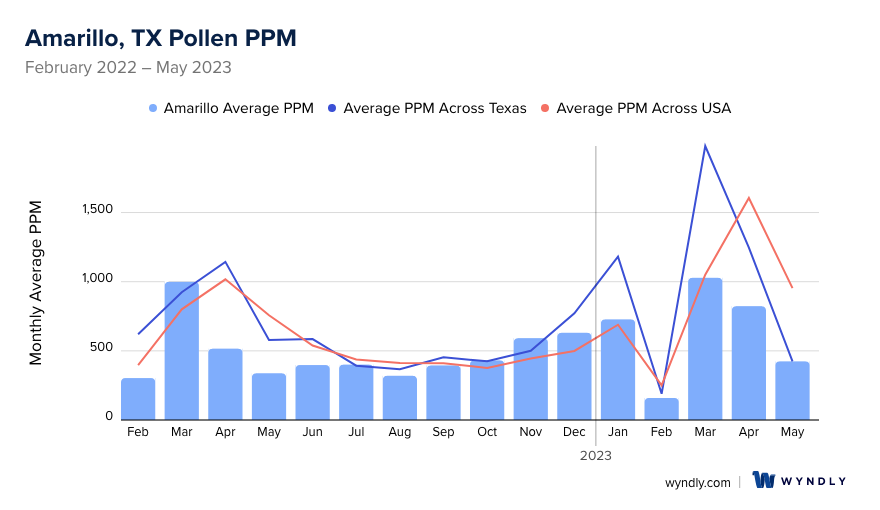
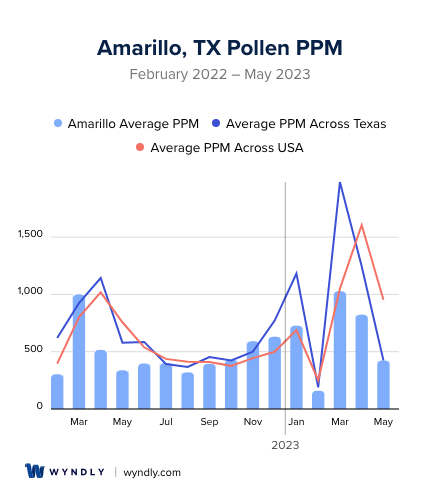
Amarillo, TX Pollen and Allergy Breakdown by Month
Grass
When is grass pollen highest in Amarillo, TX?
May has the highest grass pollen in Amarillo, TX with an average PPM of
When is grass pollen lowest in Amarillo, TX?
April has the lowest grass pollen in Amarillo, TX with an average PPM of
Tree
When is tree pollen highest in Amarillo, TX?
March has the highest tree pollen in Amarillo, TX with an average PPM of
When is tree pollen lowest in Amarillo, TX?
June has the lowest tree pollen in Amarillo, TX with an average PPM of
Weed
When is weed pollen highest in Amarillo, TX?
December has the highest weed pollen in Amarillo, TX with an average PPM of
When is weed pollen lowest in Amarillo, TX?
February has the lowest weed pollen in Amarillo, TX with an average PPM of
Amarillo, TX Pollen Monthly Breakdown by Pollen Type
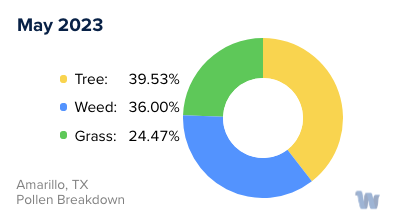
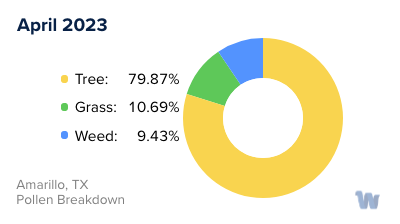
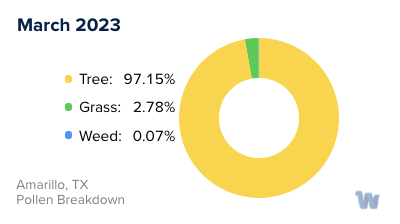
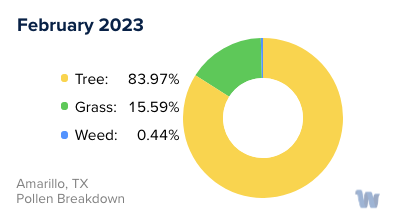
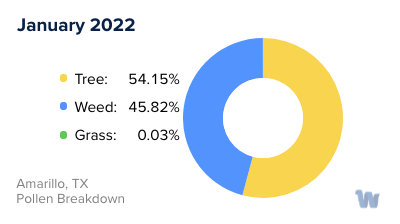
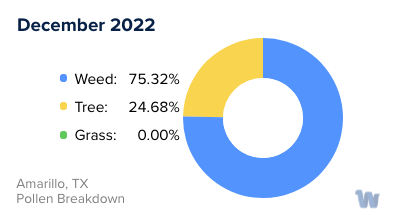
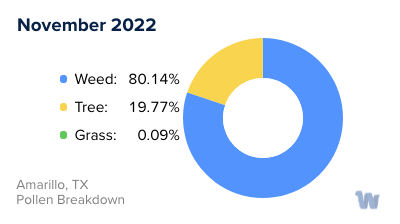
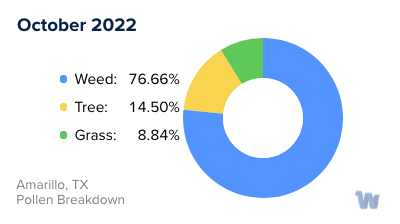
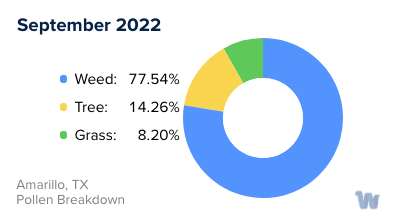
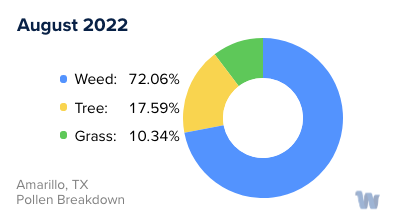
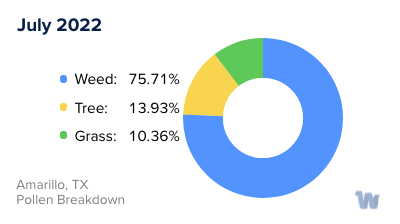
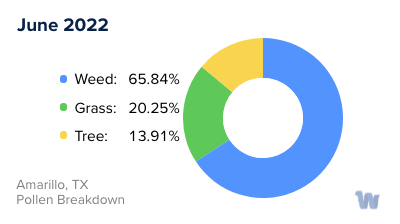
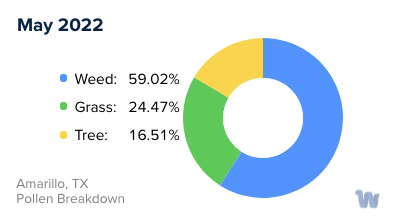
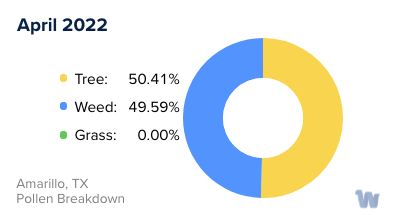
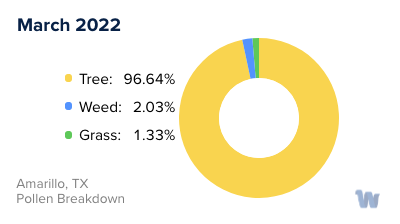
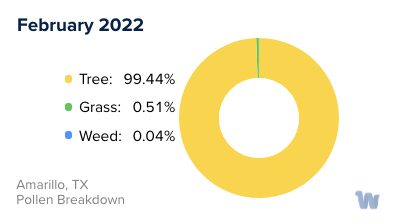
Pollen and Hay Fever in Amarillo, TX
Pollen allergies, commonly known as hay fever or allergic rhinitis, can cause significant discomfort for individuals living in Amarillo, Texas. Located in the heart of the Texas Panhandle, Amarillo experiences a diverse array of plant life that produces various types of pollen. Understanding the types of pollen and the seasons when they are most prevalent can help residents better manage their allergies.
One of the primary culprits of pollen allergies in Amarillo is tree pollen. In the spring, as the weather warms up, trees such as oak, cedar, ash, and juniper release their pollen into the air. These tiny particles can trigger allergic reactions in susceptible individuals, leading to symptoms like sneezing, itching, congestion, and watery eyes. Tree pollen levels tend to be highest in the early morning and decrease later in the day.
As spring transitions into summer, grass pollen becomes a common trigger for hay fever in Amarillo. Grasses like Bermuda grass, Timothy grass, and ryegrass release pollen, often causing symptoms like sneezing, coughing, and itchy throat. The grass pollen season typically peaks in May and June, with high levels present during warm, dry, and windy days.
In late summer and early fall, weed pollen becomes a prominent concern for allergy sufferers. Ragweed, pigweed, and sagebrush are among the common weed species that release pollen during this period. These small, lightweight particles can travel long distances, leading to widespread allergies. Symptoms of weed pollen allergies can include nasal congestion, runny nose, itchy eyes, and fatigue.
It is important for individuals in Amarillo to be aware of the pollen types and seasons prevalent in the area to effectively manage their allergies. Keeping track of local pollen forecasts and staying indoors during peak pollen times can help reduce exposure. Additionally, closing windows, using air filters, and regularly cleaning indoor spaces can help minimize pollen indoors.
By understanding the pollen patterns in Amarillo and taking proactive measures, individuals can better cope with pollen allergies and hay fever, allowing them to enjoy the beauty of nature in this vibrant Texas city.

